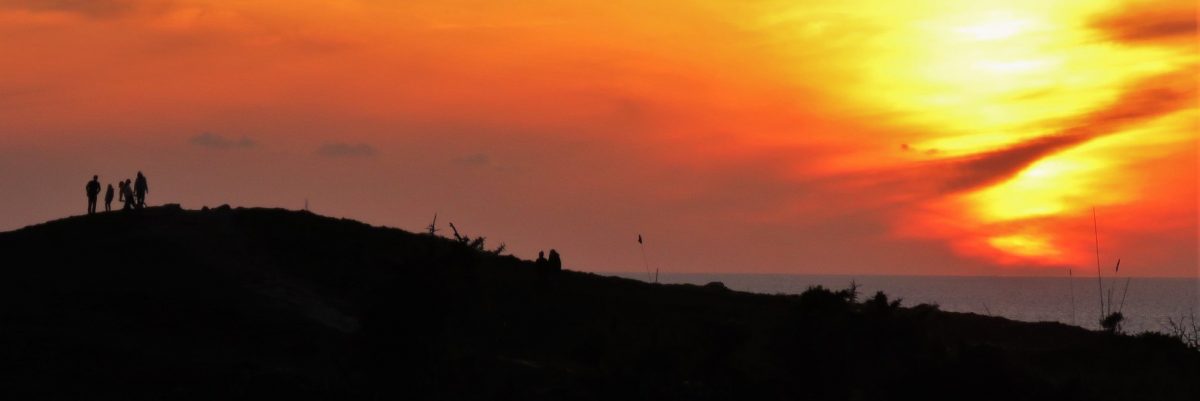More and more lately I’ve been wanting to distance myself, as far as possible, from the modern way of living – the incessant screentime, demanding notifications, consumer culture and expectations of everything being instant have brought me to a standstill this past week. Unable to push through this time, I’ve focused on performing very deliberate, tangible acts of connection – reading a physical book while listening to intricate classical music; going out to coffee shops; and of course, donning my walking boots and getting out in the elements.
The book I’ve been reading is Helen Macdonald’s H is for Hawk. Her story of taming a goshawk while working through her grief is both harrowing and inspiring, but I’ve also enjoyed the accounts she gives of different falconers from times past, often brought to their pursuit by loneliness and longing and perceptions of failed masculinity. There is something appealing about their solitude and the fraught but unique relationships they forge with their hawks, to avoid the feeling of being untethered that I have very much related to this past week.
This morning I have followed a whim that has taken me to a remote clifftop. As I trudge down the hillside that leads through the valley below the cliffs, the chilly, still air drawn down from the arctic has brought an abrupt close to what was feeling like an endless summer. An odd sort of call rings out ahead, a quiet trill – squinting through binoculars to identify the bird, my eyes land instead on a buzzard perched at the highest point of the scrub, surveying his kingdom for signs of prey. The small birds are unnerved by his presence, shrieking at him and each other, warning of the danger – explaining why I couldn’t identify the call I’d heard. He takes to the sky, performs a circle, and then as he heads away, they resume their singing of more recognisable tunes, identifying them as wrens, robins and blackbirds.
I head up to the clifftops and come across two choughs, pulling worms out of the soft ground that has been churned by the hooves of cattle. They are unperturbed as I approach to watch them through binoculars, looking to see if they have been ringed, but their red legs are bare. I have been seeing choughs increasingly of late, a signal of their successful reintroduction to Cornwall. Out to sea, a few gulls perch on rugged rocks; the sea itself is flat and calm, a perfect day to head out on a boat, and to spot larger sea-life. I scan across to see if I can see any dolphins breaching the surface but it remains unbroken. Aside from the occasional squeaky calls from the choughs and the rushing sound of a stream that runs down to the little shingle beach, the world up here is blissfully silent.
I return and retrace my steps through the small area of scrubland down in the valley where moss and lichen adorn the trees, vaguely following the path of an olive-green warbler weaving through shrubs ahead of me that is probably only a chiffchaff, but this time of year it is possible to be caught out by passage migrants of much rarer varieties. Hanging upside down from the branches of the trees, the more familiar blue and long-tailed tits flit about looking for insects and seeds to feed on. Further up the sides of the valley, I catch sight of two firecrests, identifiable by the bright line of white above their eyes and their flame-red crests; they are pleasing to watch, not the easiest birds to spot due to their minute size.
I don’t see another person the whole time I am out, but while I watch the small birds I am painfully aware of my own conspicuousness. Each time I raise the binoculars to one that has caught my eye, it takes off. Except for a robin, which sits resolutely still on a fence post as I pass it by, merely puffing up its feathers as if that would be enough to ward me off. I feel flighty as well, knowing this perfect moment alone with wildlife could be interrupted by a dog walker at any time. I find myself wishing I could shape-shift into something like a fox and steal away into the undergrowth, winding through the bracken and ivy rather than clumsily crashing along the boardwalk in the heavy footwear I must use to stay upright. Then I might have a chance of remaining relatively unseen.
When I’m looking for wildlife, I can see all the opportunities and threats they do – the pathways that reveal themselves in the leafy shadows; the open spaces that bring vulnerability. In her book, Helen Macdonald quotes Keats, who wrote of “trusting the capacity to recreate oneself”, which Macdonald experienced when watching birds as a small girl – “she made herself disappear, and then in the birds she watched, took flight”. This is something I strive to achieve when birding, but this shape-shifting only really occurs when not being observed by another person, and in those mere seconds that I get away with going unnoticed by the birds as well – it’s a trance-like state where I no longer exist in physical form but become incorporated into the natural forces like the wind and the sounds of the crashing waves. Once something notices me, triggering the awareness of inhabiting my irritatingly oafish human body again, the spell is broken.
